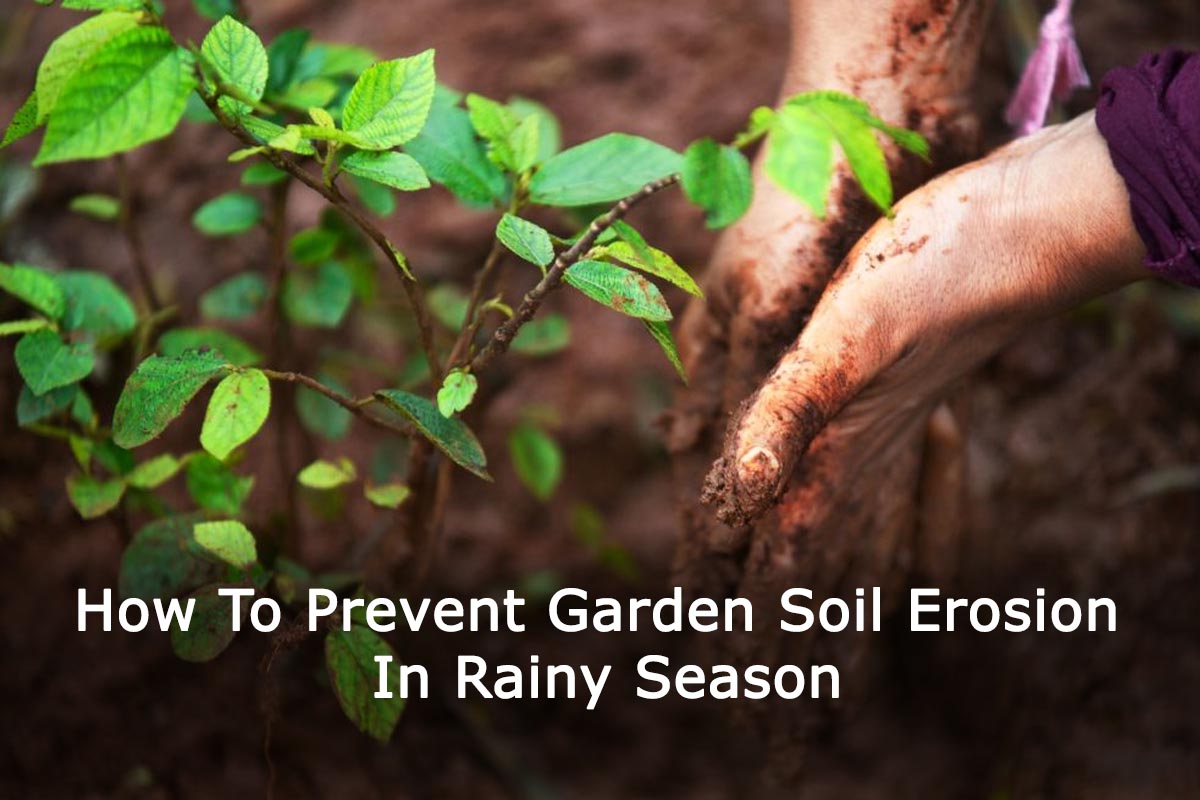
How To Prevent Garden Soil Erosion In Rainy Season
The rainy season brings much-needed relief for our gardens, rejuvenating plants and replenishing water sources. However, heavy rainfall can also lead to soil erosion, which can harm your garden’s health and stability. Soil erosion occurs when water washes away the top layer of soil, leaving plants vulnerable and leading to loss of nutrients. Fortunately, you can take several effective measures to prevent soil erosion and protect your garden during the rainy season. This article will explore some practical tips to help you safeguard your garden from soil erosion and maintain its health and beauty.
Also Read This : Seed Selection : A Guide to Choosing the Perfect Seeds for Your Vegetable Garden
How To Prevent Soil Erosion In Rainy Season
- Mulching
- Select Appropriate Potting Mix
- Terracing
- Planting Groundcover
- Constructing Retaining Walls
- Rainwater Harvesting
- Contouring and Swales
- Prevent Rain Water From Pouring Directly Into Pot
Also Read This : Exploring the Distinctions Between Compost, Mulch and Fertilizer
Mulching
Mulching is a simple and effective technique to prevent soil erosion. Applying a layer of organic mulch, such as wood chips, straw, or leaves, helps to create a protective barrier that reduces the impact of rainfall. Mulch absorbs water, slows its flow, and allows it to penetrate the soil gradually. This helps prevent runoff and erosion while promoting water retention and providing essential nutrients to plants.
Also Read This : Guide to Utilizing Rooting Powder in Plant Propagation
Select Appropriate Potting Mix
Choosing the right potting mix is crucial in preventing soil erosion. Opt for a mix that is well-draining yet retains moisture. A quality potting mix with organic matter, such as compost or peat moss, helps improve water absorption and reduces the chances of runoff. Avoid heavy clay-based soils that tend to become compacted and less permeable to water.
Also Read This : Nurturing Succulents: A Comprehensive Guide to Watering
Terracing
If your garden is on a slope, terracing can be an excellent solution to prevent soil erosion. Terraces are created by levelling the land into multiple flat areas, each with a small retaining wall. These walls help slow down the water flow and prevent it from washing away the soil. By creating terraces, you can effectively manage water runoff and reduce erosion risk. Additionally, decks can also create visually appealing spaces for planting and gardening.
Also Read This : Exploring the Significance of Popular Succulent Plants in Your Garden
Planting Groundcover
Introducing groundcover plants is another effective method to protect your garden from erosion. Groundcover plants, such as clover, creeping thyme, or ornamental grasses, form a dense network of roots that stabilize the soil and prevent it from being washed away. Their foliage also acts as a natural barrier, reducing the impact of rainfall on the soil surface. Furthermore, groundcover plants add beauty and diversity to your garden, enhancing its overall aesthetic appeal.
Also Read This : Embracing Green Gifting: Why It’s Becoming the New Normal
Constructing Retaining Walls
For gardens on steep slopes or areas prone to erosion, constructing retaining walls can be a viable long-term solution. Retaining walls are typically made of stone, brick, or concrete and are designed to hold back soil, preventing it from being washed away. By redirecting the flow of water and providing structural support, retaining walls effectively minimize erosion risks and create terraced areas for gardening.
Also Read This : Rainy Season Flower Power: Colorful Blooms in Wet Weather
Rainwater Harvesting
Implementing a rainwater harvesting system can significantly reduce the amount of water runoff and subsequent erosion in your garden. Collecting rainwater in barrels, tanks, or underground storage systems allows you to use it for irrigation during drier periods. By capturing and using rainwater, you reduce the volume of water flowing through your garden, minimizing the risk of erosion and maximizing the efficiency of water usage.
Also Read This : Water-Wise Gardening: How to Conserve Water in Your Garden
Contouring and Swales
Contouring involves shaping the land into curved lines, following the landscape’s natural contours. This technique helps slow water flow and prevent erosion by creating small ridges and depressions that capture and retain water. Swales, on the other hand, are shallow ditches or channels dug along the contour lines. They serve as water-collection areas and direct water away from vulnerable areas. By combining contouring and swales, you can effectively manage water flow, prevent erosion, and promote healthier plant growth.
Also Read This : Tree Branching Out: A Comprehensive Guide to Growing Trees from Twigs
Prevent Rain Water From Pouring Directly Into Pot
When rainwater falls directly into pots or grow bags, the water droplets displace the soil, causing the soil level to decrease in the pots. To avoid this problem, you can prevent water from reaching the plants by installing a green net in your terrace garden. With the help of a green shade net, you can protect your plants during the rainy season and in the summer months.
Also Read This : Exploring the Majestic Big Leaf Plants of India
Protecting your garden from soil erosion during the rainy season is essential for maintaining vitality and beauty. By employing techniques such as mulching, terracing, planting groundcover, constructing retaining walls, implementing rainwater harvesting, and contouring, you can significantly reduce the risk of erosion and create a sustainable garden environment. Remember, taking proactive steps to prevent soil erosion not only preserves the health of your garden but also contributes to the conservation of valuable soil resources. Embrace these practices, and watch your garden thrive even during the rainy season.




